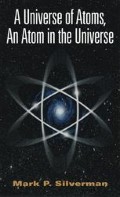Abstract
In the lighthearted, madcap African satire, The Gods Must Be Crazy, a Coke bottle, nonchalantly tossed from the cockpit of an airplane, landed in the midst of an isolated Bushman family never before exposed to the familiar commodities of “civilization.” Of the many uses the family found for this mysterious “heaven-sent” gift, among the most pleasing was that of a musical instrument. (As the story unfolded, however, there were other less pleasing attributes—and the resourceful Bushman went to great lengths to return the gift and recover his peace of mind.) By teaching courses based on what I have called “self-directed learning”1 —the radical proposition that students learn science better when striving to answer questions that arise out of their own curiosity—I have often been led to explore imaginative avenues of physics that would not likely have occurred to me had it not been for the curiosity of some student. In this way, I, together with a student colleague (E. R. Worthy), likewise came to realize that a Coke bottle—or, more precisely, about ten bottles containing different volumes of water—does indeed make a splendid instrument. Yet, surprisingly, for so superficially simple a structure, the tones of the bottle are by no means easily accounted for. For my student and me, as for the Bushman, the Coke bottle has not been drained of all its mystery.
Access this chapter
Tax calculation will be finalised at checkout
Purchases are for personal use only
Preview
Unable to display preview. Download preview PDF.
Notes
M. P. Silverman, Self-Directed Learning: A Heretical Experiment in Teaching Physics, American Journal of Physics 63 (1995) 495
1a. M. P. Silverman, Self-Directed Learning: Philosophy and Implementation, Science & Education 5 (1996) 357
1b. M. P. Silverman, Problem-Based Learning and Self-Directed Learning, What Works II: Postsecondary Education in the 21st Century, Penn State University, State College, PA, 1996.
See, for example, D. Halliday and R. Resnick, Fundamentals of Physics, Wiley, New York, 1988, pp. 425–428.
L. L. Berenek, Acoustics, McGraw-Hill, New York, 1954, pp. 128–143
P. M. Morse, Vibration and Sound, American Institute of Physics, New York, 1976, pp. 233ff.
P. B. Medawar, The Art of the Soluble, Methuen, London, 1967.
1997 Darwin Award Winner, APS NEWS 7 (January 1998) 7. The Darwin Awards, usually bestowed posthumously, celebrate the theory of evolution by commemorating the remains of those who have removed themselves from the human gene pool in spectacularly stupid ways. (The official web site is http://www.darwinawards.com.)
In a correction [“But It Was Such a Good Story…”] published several months later (March 1998), the APS NEWS noted that the reported incident actually occurred in 1982, that the flight lasted two hours (not fourteen), and that the lawnchair descended (without rescue by helicopter) onto power lines, blacking out a neighborhood for 20 minutes. A collection of news reports about the incident, which came to my attention long after this chapter had been completed, is available at the website http://www.markbarry.com/amazing/lawnchairman.html. There, one can see photos of the launch and hear a recording of the radio communication between the aeronaut and his ground crew. There is nothing to indicate that the balloonist was frightened; indeed, he was very much enjoying the flight.
A. Calandra, The Barometer Story: Angels on a Pin, reprinted in The Shape of This Century: Readings from the Disciplines, edited by D. W. Rigden and S. S. Waugh, Harcourt Brace Jovanovich, New York, 1990, pp. 343–344.
M. Neiburger, J. G. Edinger, and W. D. Bonner, Understanding Our Atmospheric Environment, W. H. Freeman, San Francisco, 1973, p. 27
A. Maton et al., Exploring Earth Science, 2nd ed., Prentice-Hall, Needham, MA, 1997, p. 193.
Lord Rayleigh, On Convection Currents in a Horizontal Layer of Fluid, When the Higher Temperature Is on the Under Side, Philosophical Magazine 32, Series 6 (1916) 529–546
reprinted in B. Saltzman, Theory of Thermal Convection, Dover, New York, 1962, pp. 3–20.
Sir James Jeans, The Dynamical Theory of Gases, Dover, New York, 1954, p. 335.
Sir Isaac Newton, Principia, Motte’s translation into English, revised by Cajori, University of California Press, Los Angeles, 1966
Sir Isaac Newton, Opticks, based on the fourth edition, London, 1730, Dover, New York, 1952.
W. F. Magie, A Sourcebook in Physics, McGraw-Hill, New York, 1935, pp. 125–128.
W. F. Magie, The paper is briefly cited—but with no mention of the law of cooling—in Richard Westfall’s biography of Newton, Never at Rest, Cambridge University Press, London, 1980, p. 527.
W. F. Magie, The citation is Scala graduum caloris, Philosophical Transactions, 22 (1700–1701), 824–829.
For additional discussion of Newton’s experimental genius, see M. P. Silverman, Waves and Grains: Reflections on Light and Learning, Princeton University Press, Princeton, NJ, 1998), Chapter 5: Newton’s Two-Knife Experiment.
This paper (“Convection of Heat”), among other Rumford writings, is also to be found in Magie’s Sourcebook (pp. 146–161).
See, for example, R. A. Serway and J. S. Faugn, College Physics, 5 ed., Saunders, New York, 1999, p. 356.
E. Hecht, Physics: Algebra/Trig, 2nd ed., Brooks/Cole, New York, 1997, p. 1020.
See, for example, A. Heck, Introduction to Maple, 2nd ed., Springer-Verlag, New York, 1997, p. 537.
Author information
Authors and Affiliations
Rights and permissions
Copyright information
© 2002 Springer-Verlag New York, Inc.
About this chapter
Cite this chapter
Silverman, M.P. (2002). Musical Bottles, Flying Balloons, and Hot Stoves: The Uncommon Physics of Common Things. In: A Universe of Atoms, An Atom in the Universe. Springer, New York, NY. https://doi.org/10.1007/978-0-387-22761-0_3
Download citation
DOI: https://doi.org/10.1007/978-0-387-22761-0_3
Publisher Name: Springer, New York, NY
Print ISBN: 978-1-4684-9266-8
Online ISBN: 978-0-387-22761-0
eBook Packages: Springer Book Archive

